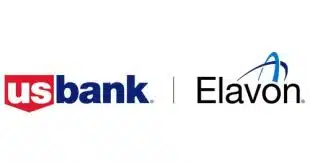New services like real-time payments and open banking demand a real-time ledger alongside the core—a digital twin. Here’s why.
The financial-services industry is at an inflection point, driven by the rapid rise of real-time payments and consumer expectations for 24/7 banking. Legacy core-banking systems, while reliable, were not designed to handle the demands of instant payments, open banking, and artificial intelligence (AI).
As banks grapple with the challenges of modernization, one solution is emerging as both innovative and practical: the digital-twin approach.
A digital twin in financial services is a real-time transaction ledger that operates alongside a bank’s core system. Unlike a traditional core replacement, which is costly and disruptive, the digital twin selectively replicates account data and handles transaction processing. It authorizes transactions, updates balances, and responds to inquiries in real time, whether the core is online or offline.
This approach decouples transaction authorization from the core, enabling banks to meet modern demands without overhauling their infrastructure. While the core continues to manage compliance, reporting, and complex calculations, the digital twin focuses on authorizing transactions, so customers enjoy around-the-clock access to banking services.
The need is urgent. Banks are losing ground to digital-first, nonbank competitors that excel in speed and convenience. Consumers expect banking services to match the immediacy of modern conveniences like food delivery and streaming.
However, legacy cores are often bottlenecks, holding up innovation.
The digital-twin approach is a low-risk, cost-effective way to modernize banking systems. By integrating a real-time transaction ledger, banks can address today’s challenges while positioning themselves for the future.
Use Cases
Here are four key use cases that highlight the potential of digital-twin technology:
- Instant Payments Without Replacing Your Core
Consumers increasingly expect instant payments to be available 24/7. Yet, legacy cores can struggle to meet these expectations due to their batch-oriented processing and limited uptime.
A digital twin addresses these challenges by:
- Authorizing transactions in real-time: Customers experience seamless payments regardless of whether the core is online;
- Updating balances 24/7: Balances are always accurate and available for inquiry, even during system maintenance or outages;
- Reducing costs: By handling transaction inquiries and balance updates, the digital twin minimizes expensive calls to the core system.
This approach enables financial institutions to launch real-time payment services like RTP or FedNow without overhauling their core infrastructure, providing a faster path to market.
- Resiliency During Core Downtime
Banks must remain operational even when their core systems are offline for maintenance or because of unexpected outages. A digital twin ensures continuity by taking over transaction processing and balance updates during these times.
For example, during system upgrades, customers can continue making payments, checking balances, and conducting business as usual. This resiliency not only prevents service disruptions but also builds customer trust and satisfaction.
- BaaS with Real-Time Oversight
For sponsor banks offering banking-as-a-service (BaaS), managing fintech relationships requires real-time visibility into funds held on behalf of others (FBO). A digital twin provides the oversight needed to monitor fintech and end-user account balances.
Key benefits include:
- Real-time tracking: Sponsor banks can monitor FBO accounts and fintech balances as transactions occur;
- Simplified reconciliation: Up-to-date data ensures that financial operations and compliance requirements are met efficiently.
This visibility strengthens the bank’s position as a reliable partner in the BaaS ecosystem.
- Seamless M&A Integration
Mergers and acquisitions (M&A) often require banks to consolidate multiple core systems, a process that can be disruptive to customers and fraught with risk.
A digital twin simplifies this challenge by:
- Handling transaction processing independently: Banks can integrate multiple systems without depending on legacy cores;
- Allowing extensive testing: The digital twin can be implemented well in advance of the core switchover, providing time to ensure a smooth migration.
By taking a digital-twin approach, banks can complete M&A transitions confidently, minimizing downtime and ensuring a seamless experience for customers.
Future Proofing
The digital-twin approach not only addresses today’s challenges but also positions banks for future innovation:
- Open Banking: Real-time transaction data stored in the digital twin can be shared with authorized third parties without relying on the core;
- AI Applications: Structured, real-time data from the digital twin supports advanced artificial-intelligence models for fraud detection, predictive analytics, and personalized customer experiences.
Banks no longer need to choose between stability and innovation. The digital-twin approach offers a practical, low-risk solution to modernize banking operations while preserving the reliability of legacy cores.
Disruption Proofing
In an era of instant payments and heightened consumer expectations, the digital-twin approach is transforming financial services.
By adopting this innovative technology, banks can unlock real-time capabilities, ensure resiliency, and embrace opportunities in open banking and AI—without the disruption of a core replacement.
As the financial industry evolves, those who leverage the digital twin approach will not only meet the demands of today but also lay the groundwork for the future of banking.
—Carlos Netto is chief executive of Matera





